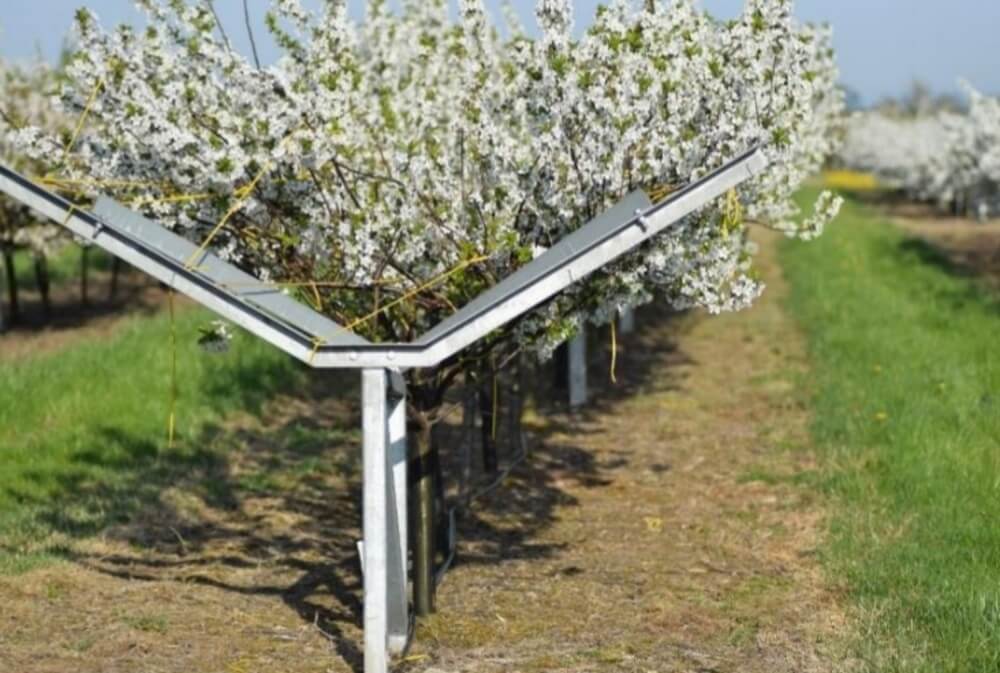Poor seed germination is one of the major limitations in sour cherry (Prunus cerasus L.) breeding programs, causing a drastic reduction in the number of seedlings available compared with the considerable effort required for controlled pollinations and plant material management.
The issue is linked to the physiological dormancy typical of Prunus species, due to the presence of germination inhibitors distributed across different seed components, including the endocarp, seed coat, endosperm, and cotyledons, which delay and limit radicle emergence even under optimal environmental conditions.
Traditionally, cold stratification is used to overcome this physiological barrier, but it requires long periods and does not always ensure uniform germination, resulting in lengthened selection cycles and increased costs.
Recent research findings
A recent study conducted at the National Institute of Horticultural Research in Skierniewice, Poland, tested various combinations of stratification at 5 °C and mechanical removal of physical barriers and sources of inhibitors in three sour cherry cultivars: “Wanda”, “Wroble”, and “Lutowka”, in order to increase germination rates and improve early seedling growth.
The trials showed that removing the seed coat, followed by exposing embryos to 20 °C after 90 days of cold stratification, made it possible to achieve germination rates between 80% and 90% in only 10–15 days, compared with 16.4% to 54.4% under traditional stratification, even when extended to 150 days.
Moreover, this protocol produced vigorous seedlings, 20–25 cm tall, in five months, whereas with the conventional method many seeds had still not germinated.
Impact of stratification duration
The duration of stratification proved to be a determining factor not only for germination but also for seedling growth: shorter treatments (30 or 60 days) significantly reduced both uniformity and vigor, resulting in shortened internodes and stunted growth.
Genotype influenced the response: “Wroble” and “Lutowka” showed higher germination capacity than “Wanda”, confirming reports in the literature that drupes of earlier-ripening cultivars often do not reach full seed maturity.
Partial cutting of the cotyledons also affected germination, increasing the percentage of embryos initiating development, but penalizing subsequent growth due to the reduced reserves in the embryonic tissues.
Implications for breeding programs
The results confirm the importance of integrating combined approaches: deactivation of inhibitors through cold exposure and removal of mechanical barriers and internal inhibitory sources make it possible to shorten breeding cycles while improving overall efficiency.
In particular, the ability to rapidly obtain a large number of vigorous seedlings enables acceleration of the evaluation phases for traits of interest, with a direct impact on costs and on the rate of genetic improvement achievable per unit of time.
This methodology can provide a valuable contribution to Prunus cerasus L. breeding programs and could potentially be extended to other related species with hard seeds and complex dormancy, increasing the efficiency of genetic material management in research centers and nurseries.
Source: Szymajda, M., & Maciorowski, R. (2025). Seed Preparation Methods for Increasing the Germination of Sour Cherry (Prunus cerasus L.). Forests, 16(3), 516. https://doi.org/10.3390/f16030516
Image source: Marek Szymajda 2025
Andrea Giovannini
University of Bologna (IT)
Cherry Times - All rights reserved












